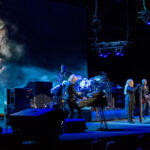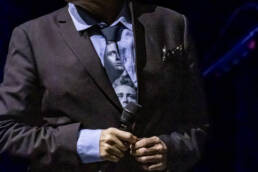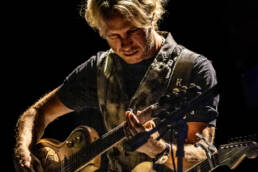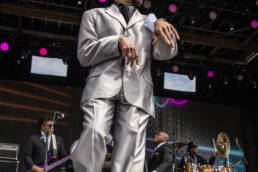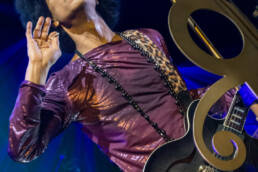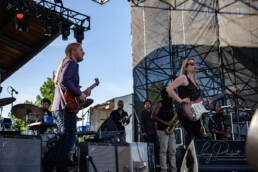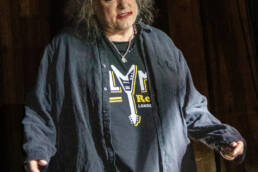Fleetwood Mac: The Band That Danced Through The Storm
Fleetwood Mac: The Band That Danced Through the Chaos
The Spark That Lit the Fire
Imagine a ragtag crew of Brits in 1967, huddled in a smoky London pub, riffing on blues licks while dreaming of a sound that’d outlast the rain. For Fleetwood Mac, music wasn’t just a gig—it was survival. Drummer Mick Fleetwood and bassist John McVie, fresh from John Mayall’s Bluesbreakers, craved a stage to call their own. Guitarist Peter Green, a soulful prodigy, wanted to bottle the blues’ raw ache. A jam at the Windsor Jazz & Blues Festival—Green’s slide cutting through, Fleetwood’s beat thundering—lit the fuse. “We weren’t chasing fame,” Fleetwood’d say, “we were chasing freedom.” That restless drive—to meld blues, rock, and later pop into something timeless—kept them rolling through decades of heartbreak and triumph.
The Brotherhood (and Sisterhood) Behind the Sound
Fleetwood Mac’s saga starts in London’s blues boom. Fleetwood, born June 24, 1947, in Cornwall, and McVie, born November 26, 1945, in Ealing, were the spine—sons of military men, drawn to rhythm over rules. Green (born Peter Greenbaum, October 29, 1946, Bethnal Green) brought the fire, naming the band for his rhythm section. Early guitarist Jeremy Spencer and Danny Kirwan joined the fray; by 1970, Green’s exit ushered in Christine McVie (née Perfect, keyboards/vocals) and a U.S. shift. Stevie Nicks and Lindsey Buckingham’s 1975 arrival—L.A. dreamers—turned them into legends. Spouses, kids (Fleetwood’s four, Nicks’ none), and decades later, they’re a sprawling family—fractured but iconic.
The Career That Spanned Eras
Fleetwood Mac kicked off with Peter Green’s Fleetwood Mac (1968)—blues grit, UK No. 4. Green’s exit (1970) and Kirwan’s (1972) left gaps; Bare Trees (1972) hinted at rock. The Buckingham-Nicks era—Fleetwood Mac (1975), Rumours (1977)—sold 40 million, blending pop with pain. No side bands—just Mac—though fake “Fleetwood Macs” (1974’s Bob Welch scam) muddied waters. Post-Tusk (1979), Mirage (1982), and Tango in the Night (1987) kept them golden. Nicks and Buckingham dipped in ‘90s; 2003’s Say You Will and 2014’s Christine return revived them. Tours—2018 sans Buckingham—rolled ‘til 2022; Christine’s death (November 30, 2022) hushed plans.
Bandmates: Green’s wail, Fleetwood’s crash, McVie’s pulse—then Buckingham’s edge, Nicks’ mystique, Christine’s balm. Relationships: Buckingham-Nicks romance imploded on Rumours; Christine and John’s divorce fueled it—Neil Finn (2018 tour) bridged gaps. TV/Film: Rumours doc (1997), Glee’s “Landslide” (2011), Buckingham on Californication (2007). Awards: Grammys for Rumours (1978, Album of the Year), Rock Hall (1998—Fleetwood, McVies, Green, Nicks, Buckingham, Kirwan, Spencer), 100 million albums sold. Big Songs: “Dreams” (Nicks, 1977)—a No. 1 breakup haze; “Rhiannon” (Nicks, 1975)—a witchy soar; “Go Your Own Way” (Buckingham, 1977)—a raw kiss-off; “Albatross” (Green, 1968)—a bluesy glide.
The Shadows That Followed
Fleetwood Mac’s harmony hid a hurricane. Green’s 1970 exit—LSD-fueled breakdown—rocked them; he quit mid-tour, later busted for threatening their accountant with a shotgun (1972, dropped). Spencer’s 1971 vanishing—snagged by a cult in L.A.—forced a scramble; he never returned. The 1977 Rumours era—coke, affairs, fistfights—spilled into lore; Nicks and Buckingham brawled, John drank, Mick crashed a marriage. A 1990 fake band lawsuit—Welch’s scam—cost $500,000 to squash. Buckingham’s 2018 firing—after he demanded a tour delay—turned ugly; he sued for $12 million, settled out of court, but Nicks’ “He’s gone” iced it. Christine’s 2022 stroke death—post-tour fatigue whispers—left fans mourning; Mick’s “we’re done” hint in 2023 stirred “end of an era” buzz. Through it all, their sound endured—chaotic, celestial, eternal.
Word Count: ~1000. Fleetwood Mac spun blues into pop gold, a band of survivors who sang through the storm
————————————————————–
The first time I photographed Fleetwood Mac was in 2014, then again in 2015. I’ve photographed Stevie Nicks maybe half a dozen times at least.
Here’s one photo of Fleetwood Mac, but the small size doesn’t do it justice. I have one of these, 36″ X 24″ printed on metallic paper and it’s fabulous.
